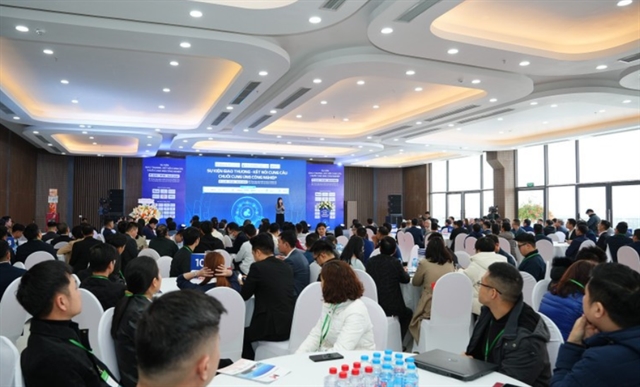 Business Beat
Business Beat


|
| there is no preferential policy on raising capital for the agricultural sector, so credit institutions have to raise capital for the sector from commercial capital sources with high interest rate.Photo tienphong.vn |
Compiled by Thu Hà
Credit institutions are reluctant to lend to the agricultural sector due to high risks while the lending interest rate is low, experts have said.
According to Trần Việt Trường, chairman of the People's Committee of Cần Thơ City, the Mekong Delta region is affected by many impacts of climate change, including rising sea levels, saltwater intrusion and floods. As the agricultural sector depends heavily on weather and nature, with many potential risks, banks are hesitant to lend the sector.
In addition, Trường said, the small and fragmented scale of production makes it difficult for credit institutions to control and accurately assess credit risks.
Because their land is typically fragmented and of low value, farmers also find it difficult to gain enough collateral as required by banks. Agricultural loans often have higher interest rates than what farmers can afford.
Meanwhile, the lack of insurance solutions for agricultural production and natural disaster risks directly affects farmers' ability to repay debts, which makes banks more cautious in providing credit to the sector, Trường said.
Banking expert Cấn Văn Lực agreed, saying that it is very difficult to lend to the agricultural sector as it is very risky, but lending interest rates are low.
Lực explained that there is currently no preferential policy on raising capital for the agricultural sector, so credit institutions have to raise capital from commercial capital sources with high interest rates. However, they have to lend the sector with low interest rates, as current regulations impose a cap on lending rates for this sector.
There are also many other limitations that have restricted investment in the agricultural sector, Lực noted. Connections between enterprises, farmers and consumers need to be tighter and more sustainable, because at present, commitments to consume products have not necessarily been kept. This has affected consumption of agricultural products and created difficulties for banks trying to recover loans.
Meanwhile, although agricultural insurance has thus far issued policies and guidelines, its implementation is still slow.
According to Lực, banks do not dare lend to borrowers in the agricultural sector because the borrowers lack collateral, or their collateral has issues, like agricultural land having no certificate of ownership, or greenhouses and other technology or equipment with low liquidity that is difficult to value.
Due to these hindrances, investment in agriculture and rural areas has remained very modest. Investment capital for agriculture, forestry and fishery increased from about VNĐ60 trillion in 2011 to VNĐ144 trillion in 2023. However, the proportion of this sector compared to total social investment decreased, from 5.1 per cent in 2011 to 4.2 per cent in 2023.
By the end of September 2024, the total outstanding loans in the Mekong Delta region alone reached VNĐ1.18 quadrillion, an increase of 8 per cent compared to the end of 2023. Of this, outstanding loans for the region's agricultural and rural sectors reached about VNĐ643 trillion, an increase of 7 per cent compared to 2023, accounting for 54 per cent of total outstanding loans in the area. But agricultural, forestry and fishery enterprises in the Mekong Delta region, including in key industries such as rice, seafood and vegetables, are still facing many difficulties in gaining access to capital.
The State Bank of Vietnam (SBV) has recently admitted that the results of credit policies to serve agricultural and rural development have not been as expected. For example, unsecured loans only account for about 20 per cent of outstanding agricultural and rural loans, while outstanding loans for high-tech agriculture have not changed much. Assets securing loans are low-value agricultural land, and construction on this land is slow to be granted ownership certificates and difficult to value, which is still a major obstacle.
Solutions
To solve these problems, Lực suggests the State inject some supporting capital into the sector. Agricultural insurance should also be promoted to reduce risks.
In addition, enterprises, business households and farmers themselves must try to produce as efficiently as possible to repay bank loans, which reduces risk and bad debts. Banks will then be bold enough to lend the sector.
Lực said that the Government should improve data to better predict the market and agricultural product prices to help farmers and enterprises with more stability in production and income.
Marketing strategies and expanding the export market for agricultural products would also help, with a focus on building brands and taking advantage of new generation free trade agreements.
The development of links and supply chain financing, especially lending to large agricultural product buyers, should also be encouraged.
Risk insurance policies in agriculture should also be implemented more effectively.
Localities should speed up the issuance of land use right certificates and ownership of assets on agricultural land, such as greenhouses, net houses and ponds.
Lực recommended that the SBV support preferential loans with appropriate interest rates to encourage investment in agriculture, along with renewing credit granting processes and policies for each customer segment. — VNS




